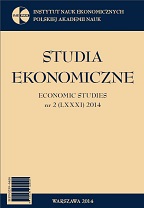Regulations for the Polish agricultural land market compared with other EU member states: implications for market efficiency
Regulations for the Polish agricultural land market compared with other EU member states: implications for market efficiency
Author(s): Bazyli Czyżewski, Adam MajchrzakSubject(s): Economy
Published by: Instytut Nauk Ekonomicznych Polskiej Akademii Nauk
Keywords: agricultural land market; land market institutions; regulations; land turnover; agrarian structures
Summary/Abstract: Despite the fact that the family farm is the basic unit of management in the European agriculture, the European Union (EU) legislation does not directly guarantee the stability of such entities. For this reason, the EU member states regulate the principles for turnover of agricultural land that favor ownership of agricultural property by family farms active in agricultural production. The goal of such principles is to enable the effective allocation of land resources assuming that European model of agriculture also provides desirable public goods. However, such allocation requires the maintenance of an optimal agrarian structure from the perspective of farm incomes. A supply of public goods is never optimal in market conditions and should be institutionally supervised. The aim of this paper is to compare land market regulations in selected EU member states and to assess the impact of farmland trade limitations on the respective market efficiency in chosen EU member states. For this purpose, a qualitative comparative analysis was conducted. The institutional solutions of Poland were compared with selected countries that represent the dominant concentration, i.e., Germany, France and Denmark. The paper shows that land market institutions in the countries of the old EU-15 have common features that ensure the stability of agrarian structures. Furthermore, land market regulations in the new member states, including Poland, differ so significantly from those of the old EU-15 that they do not guarantee the optimization of the agrarian structure. Consequently, the legislation of the old EU-15, in particular that of Germany, France and Denmark, can be regarded as a model for the land market legislation reforms in Poland. Moreover, limitations concerning the turnover of agricultural land do not exert negative influences on the allocative and informational efficiencies of the land market supposing that agricultural area in the UE is expected to provide public goods.
Journal: Studia Ekonomiczne
- Issue Year: 2014
- Issue No: 2
- Page Range: 175-195
- Page Count: 21
- Language: English

